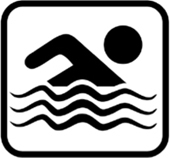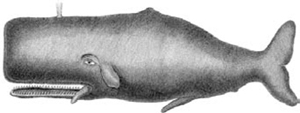Now I Know More (17 page)
Authors: Dan Lewis

Which is exactly what Richard Nixon counted on.
On October 10, 1969, the United States military was ordered to prepare for war. As the
Boston Globe
would recount three and a half decades later, “nuclear armed fighter planes were dispersed to civilian airports, missile countdown procedures were initiated, missile-bearing submarines were dispersed, long-range bombers were launched, targeting was begun.” The American military was ready to start World War III.
But if America was about to defeat the Communists, it didn't make headlines; the country was more interested in the New York Mets' ultimate triumph over the Baltimore Orioles in the World Series. The average citizen had little knowledge of the ramp-up to war. The same could be said for the servicemen involved, for that matter. Very little context, if any, was providedâAmerica was not provoked in any meaningful way leading up to the readiness alert, and no rationale for this upsurge in activity made its way down the chain of command.
And then, things got even crazier. On October 27, the U.S. Strategic Air Command dispatched bombers armed with thermonuclear warheads, ordering them to fly over Alaska and toward the Soviet Union. For three days, the bombers circled around the Arctic, just out of Soviet airspace, awaiting further instruction. Stateside, few peopleâand nearly no civiliansâhad any idea this was going on. But it certainly caught the attention of the powers-that-be in Moscow.
Nixon's gambit was an attempt to make the Soviet Union think he was crazy. His strategy, later termed the “madman theory,” was based on the idea that even the slightest provocation by the Soviets would result in Nixon blowing a figurative gasket, tossing nukes at the USSR as a sign of American strength, and not really giving a you-know-what about the consequences. The Soviets could be convinced of his own irrationality, Nixon surmised, and the odds of Soviet aggression would be greatly reduced.
It is unlikely that the “madman theory” ended up paying dividends. For much of 1969, the Soviet Union and China were engaged in a border dispute, a culmination of the ongoing deterioration of Soviet and Chinese relations. While the incipient conflict wound down in September of that year, negotiations over the delineation of the two nations' borders again heated up at around the same time Nixon feigned madness. More likely than not, Soviet leadership saw America's bombers not as the evidence of insanity that Nixon hoped, but rather that of a strategic decision to support China in case the two Communist nations went to war.
Lyndon Baines Johnson occupied the White House just before Richard Nixon did, and LBJ may have had the better resume when it came to faking people out. According to the National Park Service, LBJ would drive guests around in his blue car and, while rolling down a hill toward a lake, scream that the brakes were out and that he and his passengers were about to be in big trouble. But the joke was on his guestsâthe blue car was an Amphicar, a German-made amphibious automobile designed to float on the water's surface.

THE COMMUNIST SKIRMISH THAT TOOK PLACE IN A SWIMMING POOL
In 1958, Mao Zedong, then the Chairman of the Chinese Communist Party and the leader of China; and Nikita Khrushchev, the leader of the Communist Party of the Soviet Union, and thus the USSR's
de facto
head of state, gathered for a photo op. It was all smiles, as any such posed photo would be. Behind the scenes, though, things weren't so rosy. While both men were leaders in the Communist world, they had experienced a major ideological rift. After Stalin's death in 1953, Khrushchev was one of the leading voices in favor of more friendly relations with the non-Communist West; he eschewed the Stalinesque cult of personality common to both the USSR and China. Mao, on the other hand, took a much more aggressive approach to relations with the United States and Europe.
Starting in the mid-1950s, the relationship between China and the USSR began to fracture, and the period from 1960 through 1989 is now known as the Sino-Soviet Split, marking the two nations' irreconcilable differences. Being the world's two most important Communists, its leaders at the time put on a good show leading up to that point. The meeting just described was one such moment, but what followed was betterâuntil some details began to emerge.
Mao invited Khrushchev to a pool party.
The discussions between Mao and Khrushchev were focused on joint defensive efforts but went nowhere, quickly, as neither side wished to give in to the other. The tension during the talks gave Mao an ideaâratchet down the hostilities by reducing the formalities. He invited Khrushchev to join him at one of Mao's many palatial homes, and on August 3, 1958, the two met again.
According to
Smithsonian
magazine, on that day, Mao greeted Khrushchev in a bathrobe and slippers. One of Mao's aides presented Khrushchev with a giftâa green bathing suit. Khrushchev and Mao, per the Chinese leader's insistence, were going to cool down their negotiations by cooling down themselves. They were going for a swim in the pool.
That sounds great, except for one big problemâif you're Khrushchev, that is. The Soviet premier knew many things about the world, but how to swim was not one of them. This fact was almost certainly known to Mao beforehand, who likely used the knowledge to embarrass his Soviet counterpart. Mao swam laps while translators ran back and forth, poolside, relaying his words to Khrushchev, who was standing in the shallow end waiting, and almost certainly steaming as well.
Mao wasn't done embarrassing his counterpart, either. He insisted that Khrushchev join him in the deeper water.
Smithsonian
describes the result:
A flotation device was suddenly producedâLorenz Lüthi describes it as a “life belt,” while Henry Kissinger prefers “water wings.” Either way, the result was scarcely dignified. Mao, says Lüthi, covered his head with “a handkerchief with knots at all the corners” and swept up and down the pool while Khrushchev struggled to stay afloat. After considerable exertion, the Soviet leader was able to get moving, “paddling like a dog” in a desperate attempt to keep up. “It was an unforgettable picture,” said his aid Oleg Troyanovsky, “the appearance of two well-fed leaders in swimming trunks, discussing questions of great policy under splashes of water.”
Yes, that's right: on the urgency of Mao Zedong, Nikita Khrushchev donned a pair of swimmiesâand, a bit more than coincidentally, the two nations' relations were never quite the same.
Russia's Vladimir Putin has a reputation for pulling the same sort of stunts as Mao did. In 2006, Putin hosted Germany's Angela Merkel in Moscow for some high-profile negotiations. Also attending were Putin's pet dogsâwhich were likely invited to give the Russians an upper hand at the table. As
Foreign Policy
reported, Merkel isn't fond of dogsâshe was bitten by one as a young child and has avoided them since.

THE WHALE WHO HAS NO FRIENDS TO TALK TO
Whalesâparticularly humpback whalesâspeak. Their language is not an articulate mix of sounds like the ones we humans make, but some whales, such as the aforementioned humpbacks, make sounds akin to singing. It is widely believed by the relevant scientific communities that these sounds are how members of these species communicate with one another.
Which is why a whale dubbed the 52-hertz whale is, forever, alone.
Most whale sounds occur in the 15- to 25-hertz frequency range. But the 52-hertz whale uniquely (as far as we know) creates a sound at a much higher frequency. Unfortunately for the 52-hertz whale, this massive difference in frequency means that it cannot communicate with the other whales in the ocean.
Scientists at the Woods Hole Oceanographic Institution (WHOI) have been tracking the whale since detecting its strange noise in 1992 using hydrophones, a series of underwater listening devices originally used to track submarine movements. When the team discovered the whale, its members were surprised, to say the least. As reported by the
New York Times
, “its sonic signature is clearly that of a whale, but nothing like the normal voice of the giant blue or the next biggest species, the fin, or any other whale for that matter”; so says a WHOI marine biologist studying the whale. Further, the WHOI team believes that the whale is in otherwise good health, noting that it would be extremely unlikely that a creature with compromised health could live in solitude for over a dozen yearsâas the 52-hertz whale has.
Its life of solitude is manifested also in its odd migratory pattern. The 52-hertz whale typically travels up and down the Pacific coast of Mexico, the United States, and Canada, venturing into the Gulf of Alaska but not venturing farther north. According to the
Alaska Dispatch
, the gray whale migrates in a similar path, but ventures much farther north to feed; the 52-hertz whale never reaches that feeding ground and is therefore not likely part of that pack. As of January 2012, it was last detected south of Alaska, alone, as usual.
In fact, we don't know what species of whale the 52-hertz is. While some believe it is a species in and of itselfâperhaps the last whale of its kindâWHOI believes that is not the case. Rather, the cetologists of WHOI believe it is simply a strange, unique humpback whale.
The blue whale is the world's largest animal. It is so large that its tongue alone weighs about three tons (or about 2,700 kilograms). For comparison's sake, the largest land animal, the African bush elephantâthe whole thing, not just the tongueâweighs about six tons.

THE STRANGE EFFECT 9/11 HAD ON THE WHALE POPULATION
Canada's Bay of Fundy is located on the East Coast of North America, tucked between Maine, New Brunswick, and Nova Scotia. It's a common home to a number of ships and active ports, at least on a typical day. But September 11, 2001, was not a typical day. The attacks on the United States brought sea traffic throughout the region to a crawl as authorities rushed to ensure the safety of ships, their passengers, and their cargo. That slowdown lasted a couple of days and unintentionally created unique conditions for scientific inquiry.
For example, it helped researchers discover that whales were really stressed out.
The Bay of Fundy is a seasonal feeding ground for a few species of whales, whose populations spike in the summer and into the early fall. As a relatively enclosed body of water, the Bay of Fundy lends itself well to the study of these creatures. In September 2001, two teams of researchers were independently conducting whale-focused experiments in the area. One was collecting recordings of whale songs, to learn more about how whales communicate. The other was collecting whale feces, which, while gross, can be used to tell us more about whale diet and nutrition by measuring various hormone levels found within the stool samples. (The things we do in furtherance of science.)
Nearly a decade after 9/11, a group led by scientists from the New England Aquarium in Boston noticed that these two experiments provided a rare opportunity. For years, as the
New York Times
reported, we've known that whales “communicate with acoustic signals at low frequency, the range of many noises from ships” and that “whales move off, reduce their own calls and otherwise respond to ship noise.” Some researchers believed that whales were moving away because ship noise caused them stress, but there was no good way to test this theory. Incredibly, the 9/11 data provided a rare insight into the question.